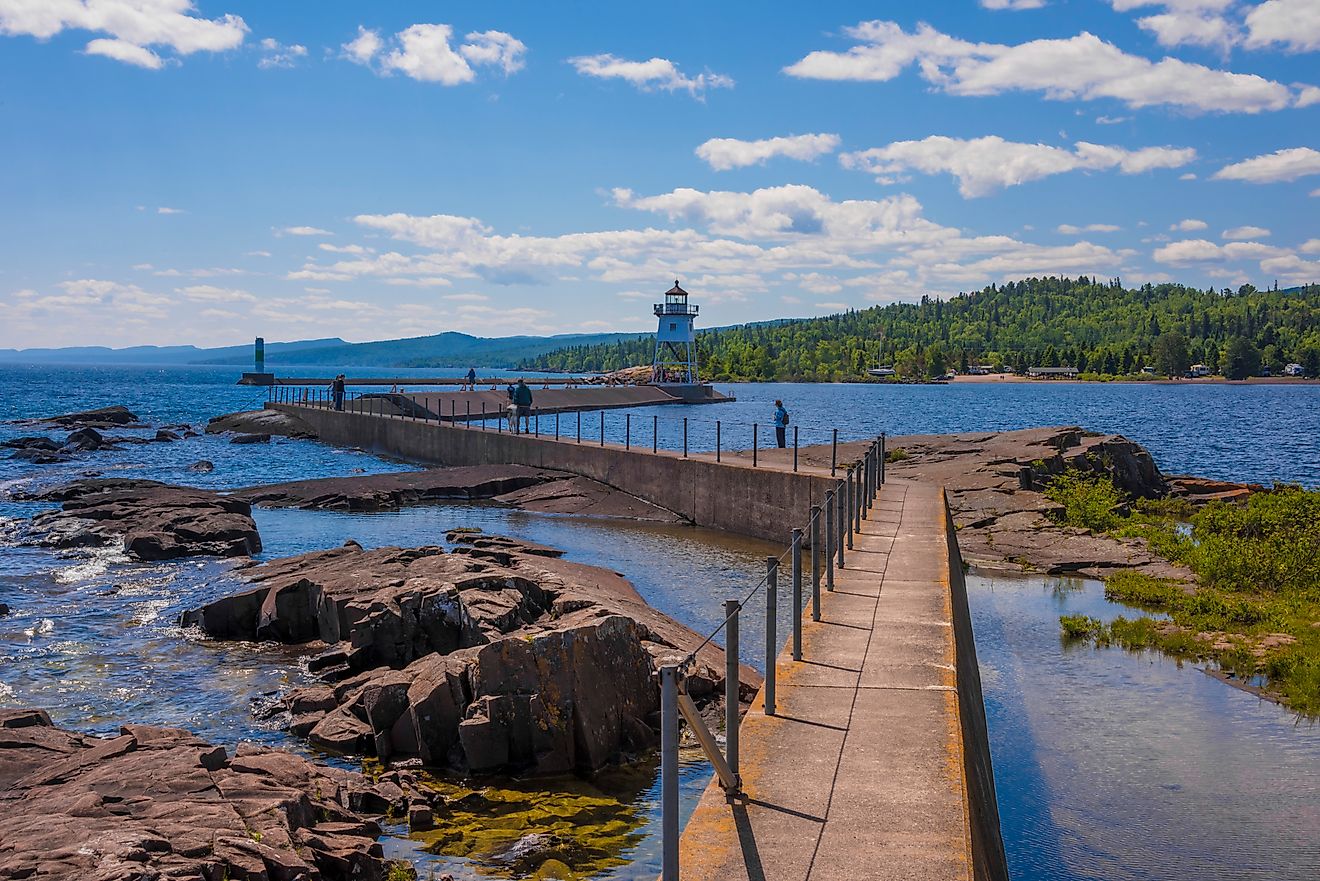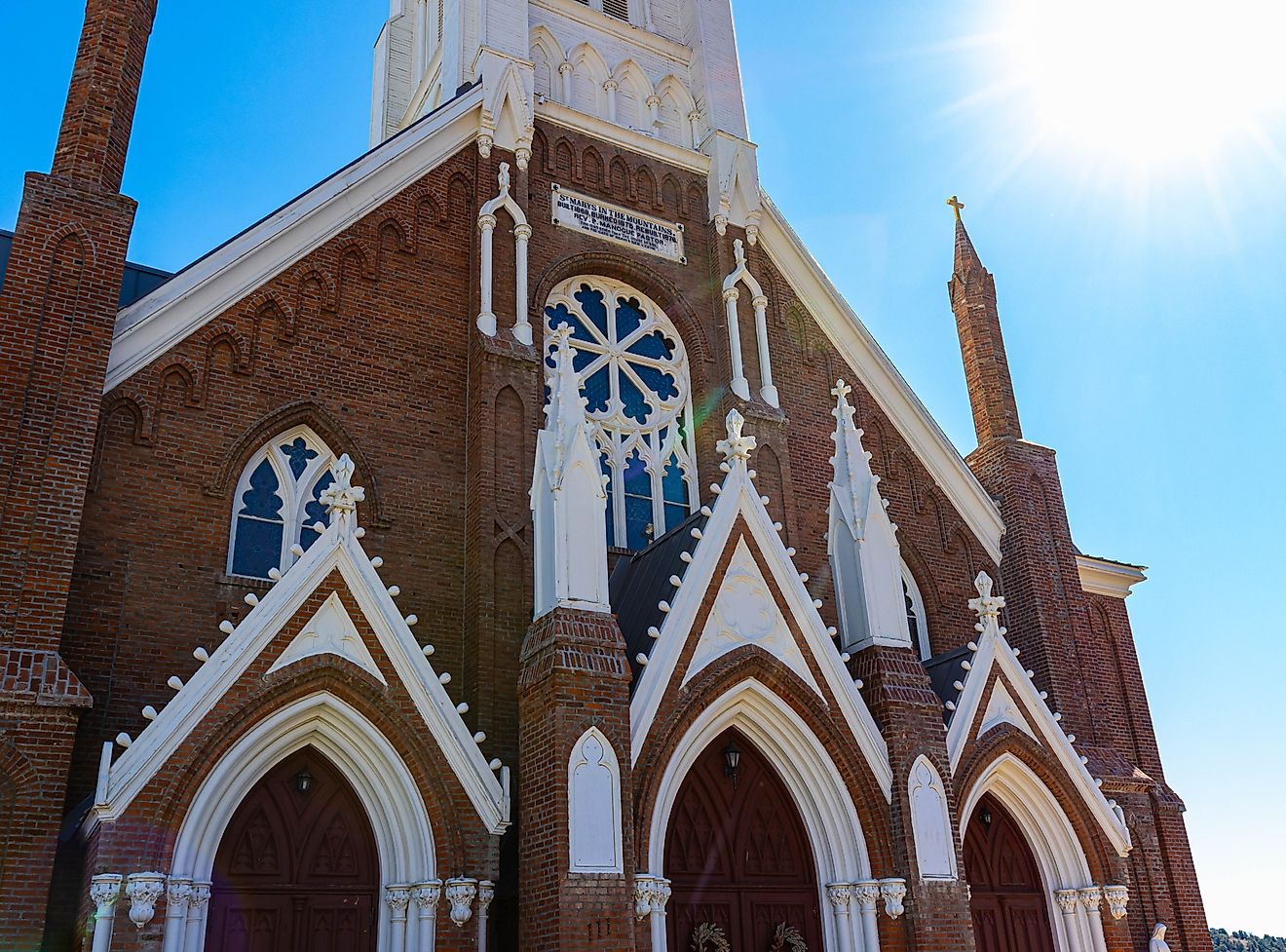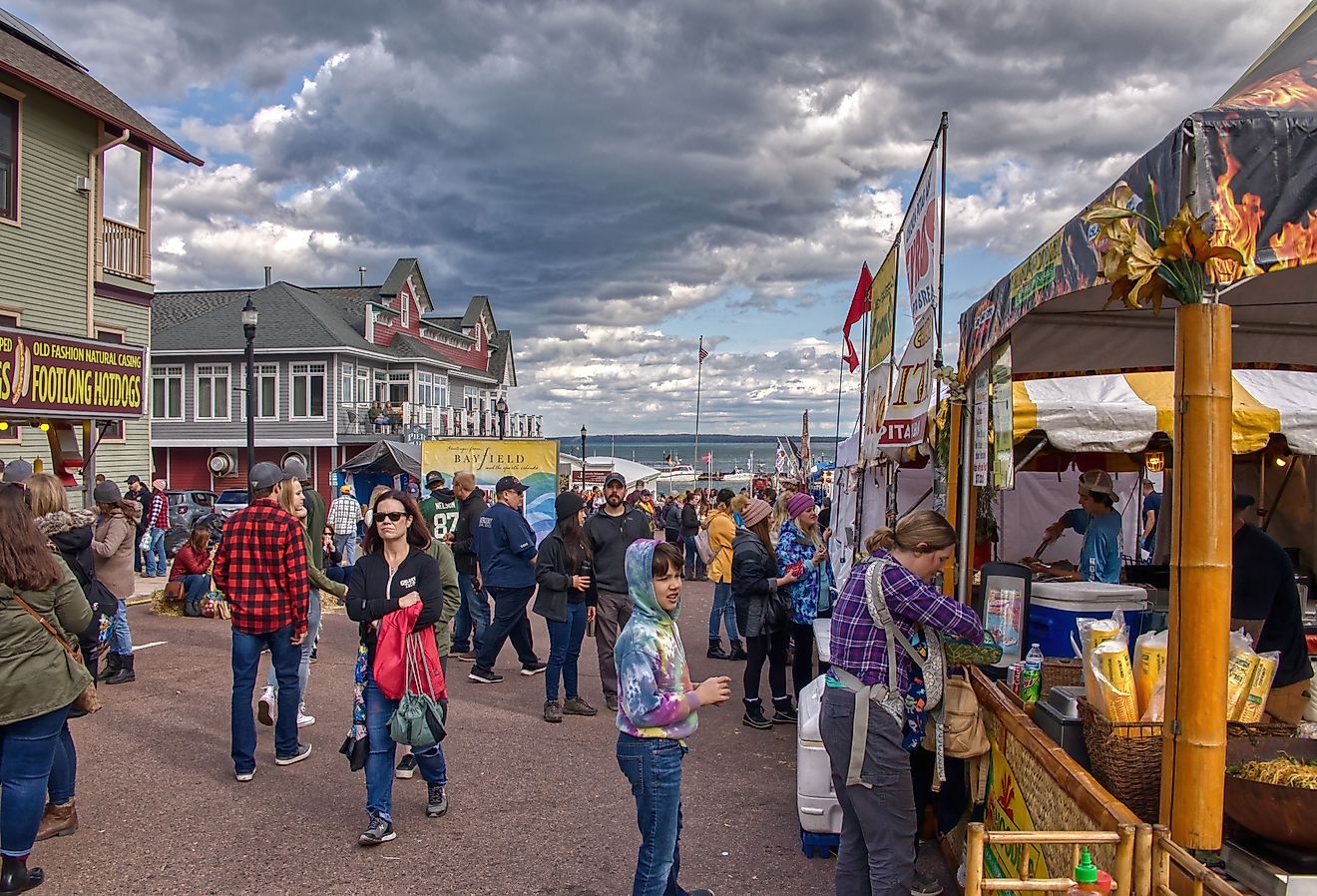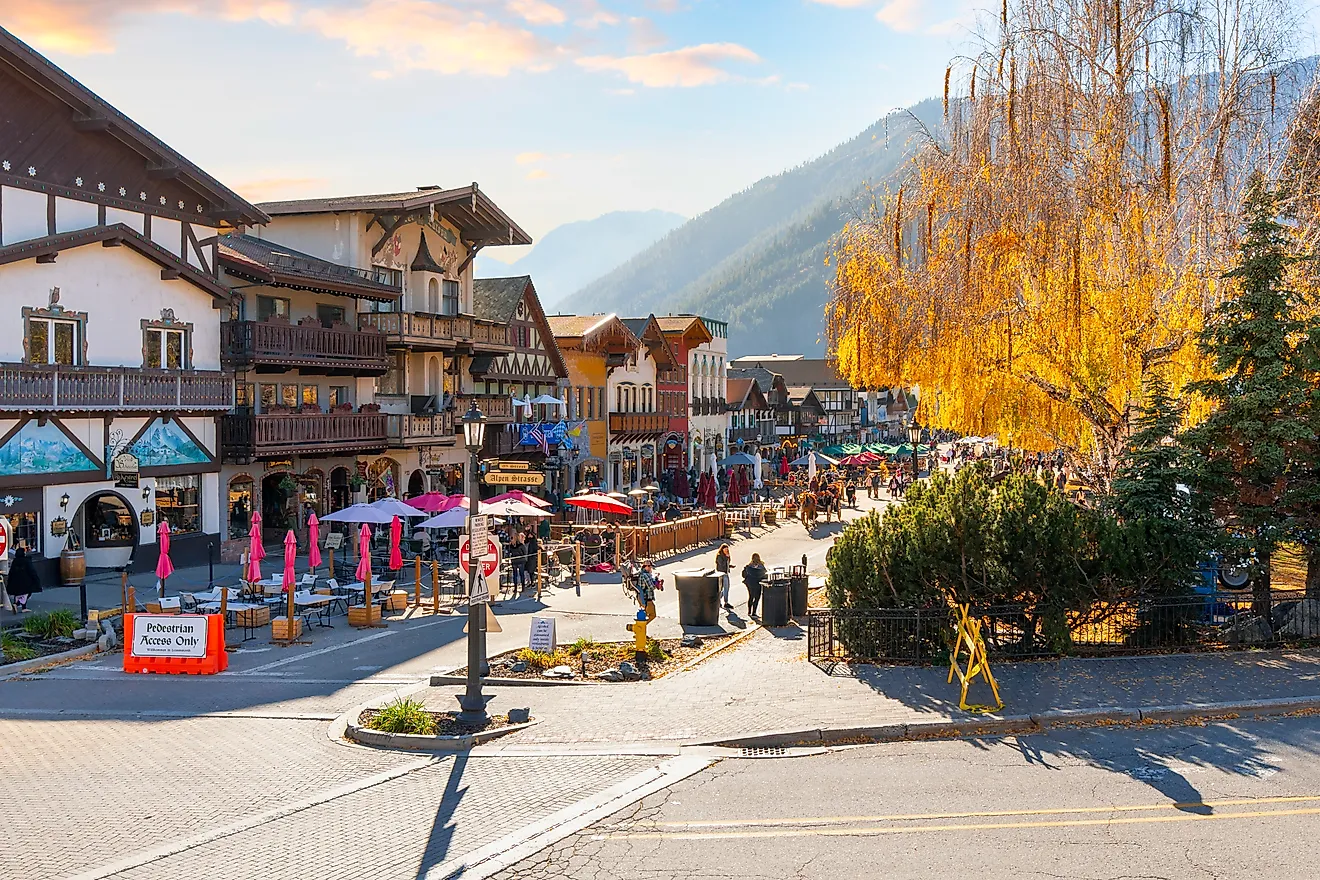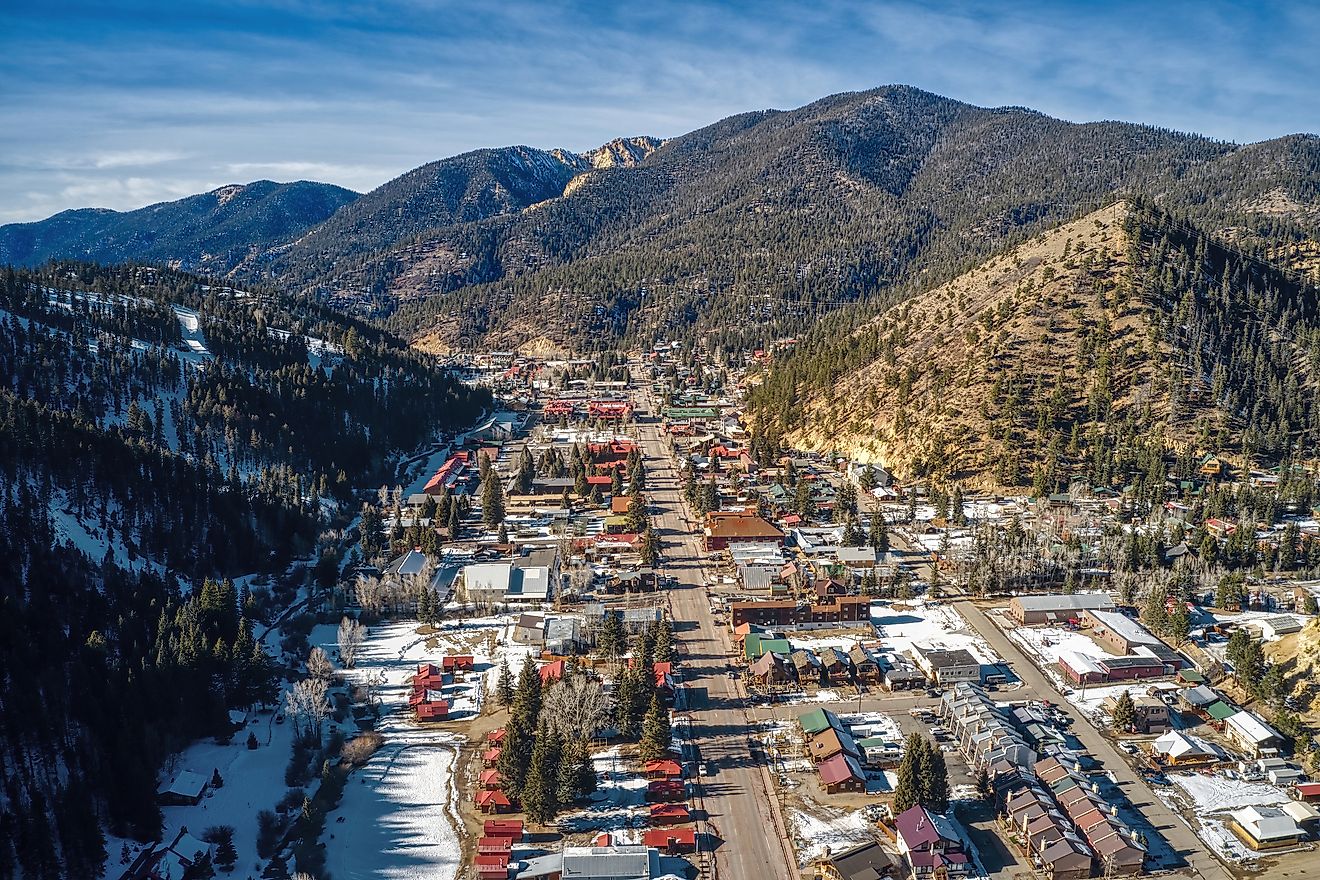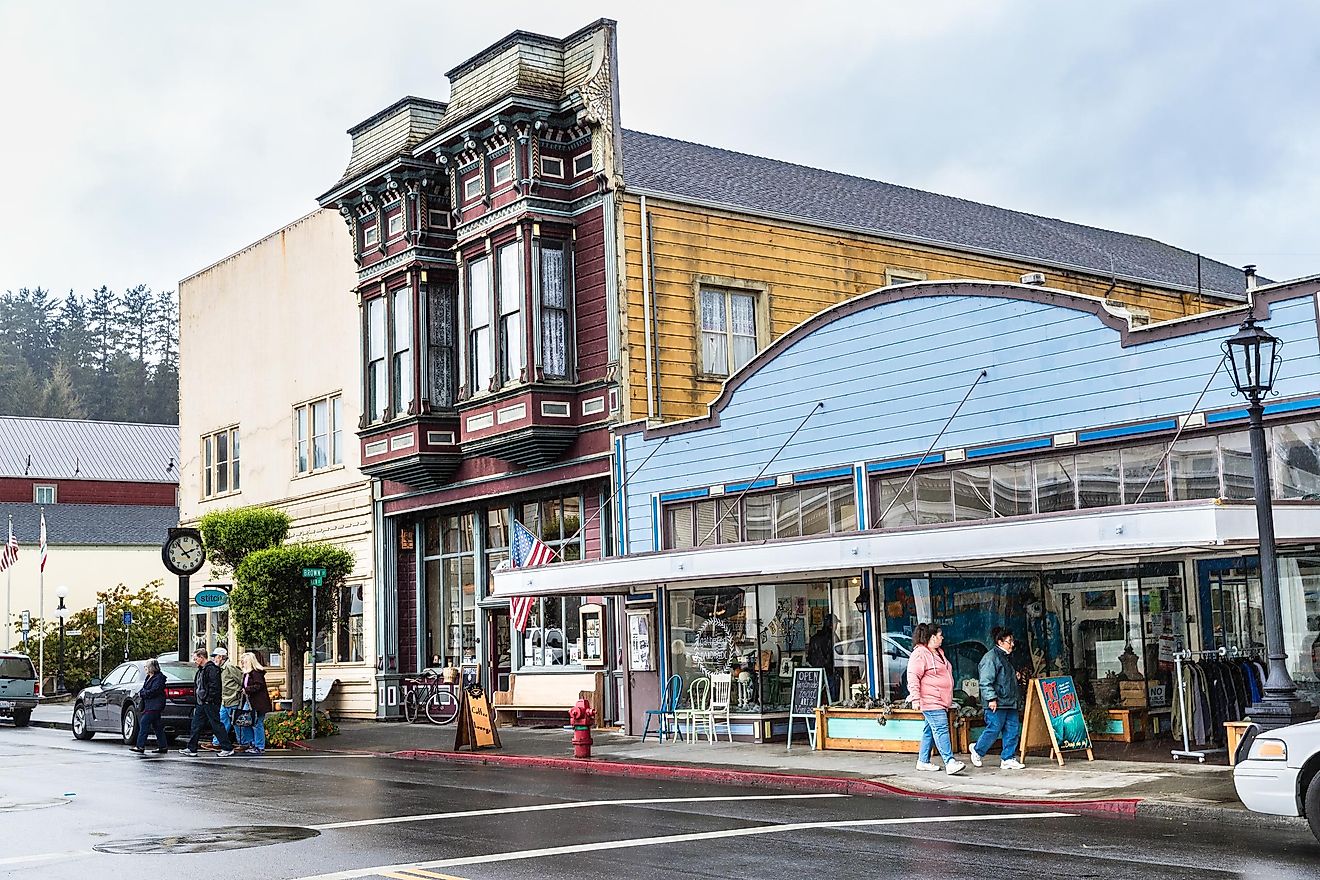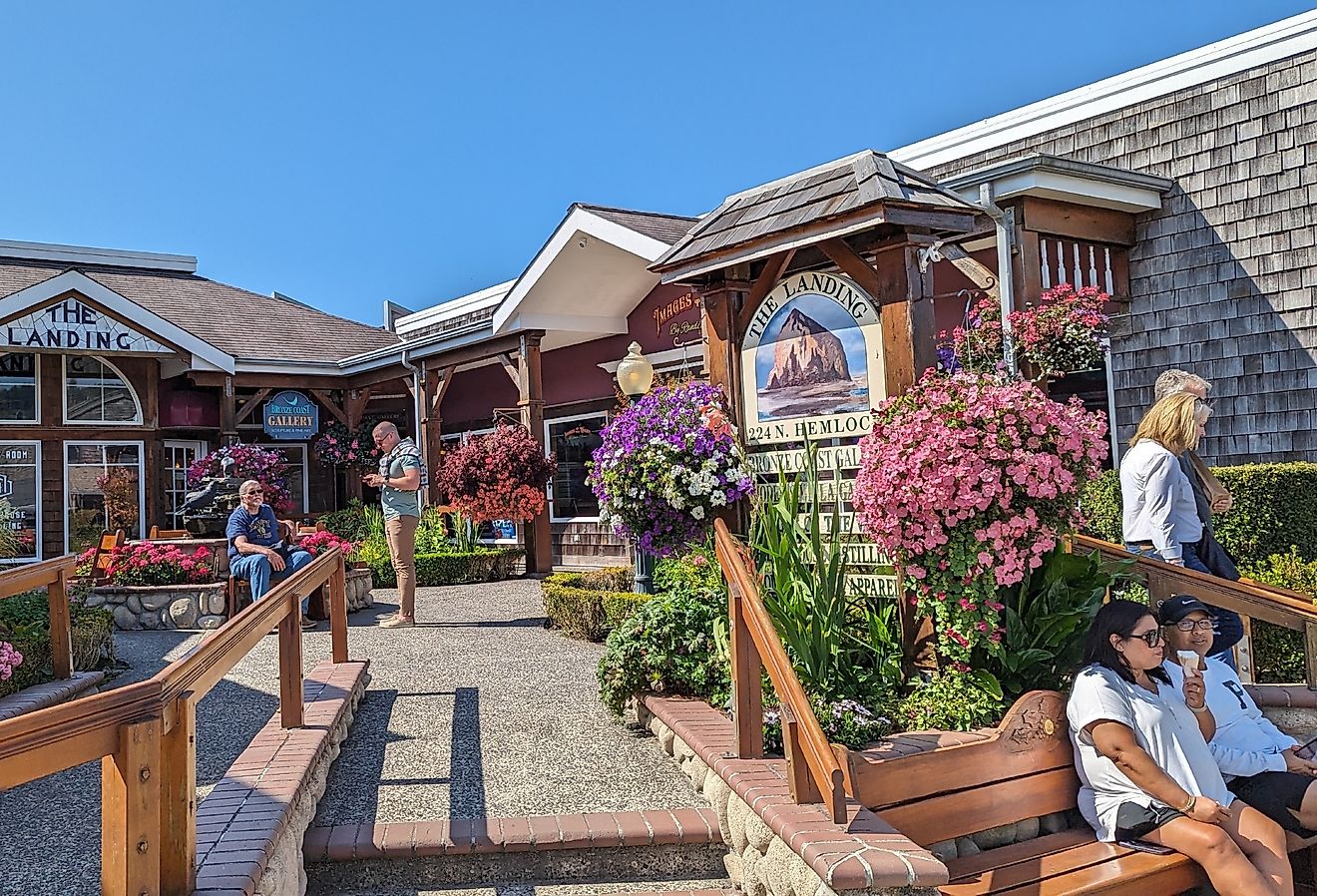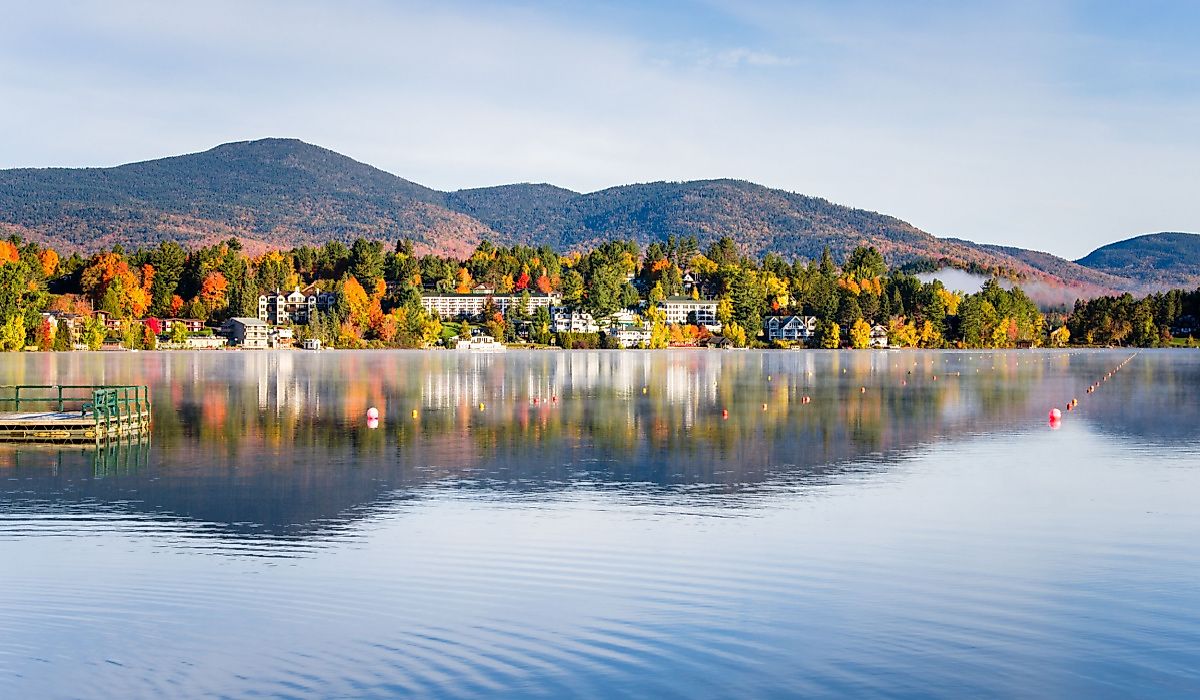
7 New York Towns Where Famous Movies Were Filmed
New York State has long been a favorite canvas for filmmakers, not just in New York City, but across its small towns, harbor villages, and Hudson Valley hamlets. Away from urban backdrops, directors have turned to waterfront piers, colonial streets, and ridgeline vistas to ground stories in place and mood. The results have ranged from psychological dramas to period romances, with the geography doing equal work alongside the scripts.
This list focuses on seven New York towns, each chosen for its cinematic history and its continued appeal as a place to walk, visit, or return to. These former film sets are functioning communities, shaped by weather and water, often more compelling in real life than they were on screen. The films shot here still carry the imprint of these landscapes.
Montauk
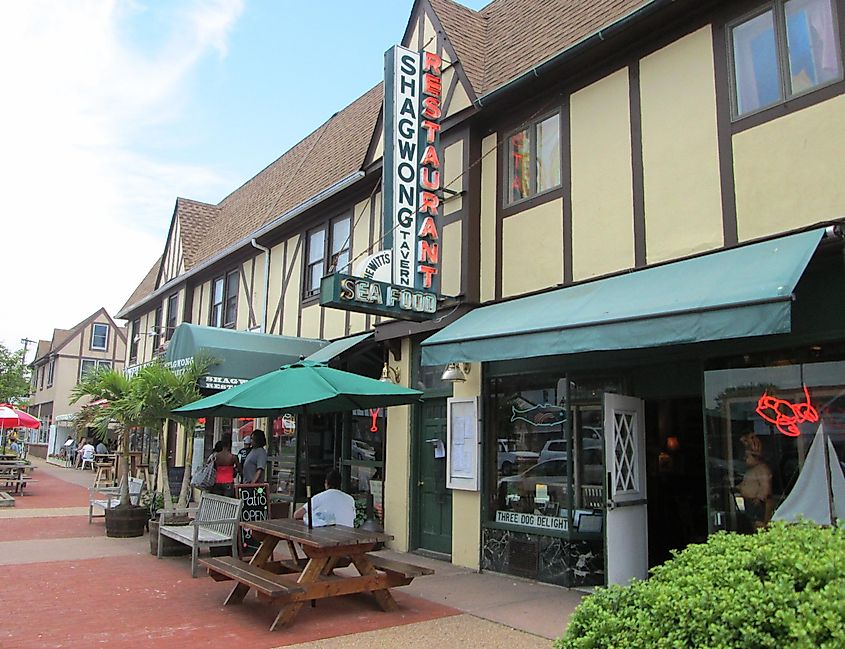
Montauk is a working harbor town at the eastern tip of Long Island, where cattle graze beside wind-bent pines and trawlers pass beneath a Cold War radar tower. The Atlantic shapes the land and the economy, cutting a stark border between town and sea. Filmmakers have used Montauk as shorthand for remoteness. Eternal Sunshine of the Spotless Mind (2004) is based on the town’s winter beaches and boarded-up structures. Scenes were shot along Ditch Plains, under the bleached wood of the boardwalk, and at the edge of Camp Hero’s bluffs, where waves strike the stone with regular impact. The decision to set the film’s erased memories in Montauk made use of both landscape and absence. The Romantics (2010) followed suit, staging its wedding weekend tension beside the shoreline, where horizon and character collapsed into each other.
Three sites hold the line between public access and working space. Montauk Point Lighthouse, active since 1796, offers interior access and a narrow spiral stair to the top deck, facing Block Island Sound. Camp Hero State Park keeps the radar tower, access roads, and shoreline trail system open.
New Paltz
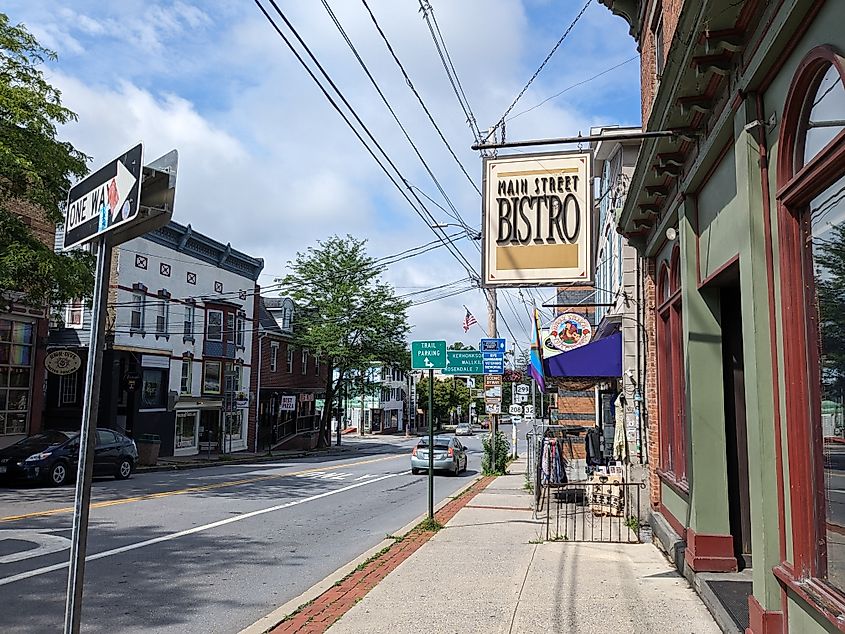
New Paltz is a college town built at the foot of the Shawangunk Ridge, where 17th-century stone houses stand five minutes from rock climbing trailheads. The ridge runs parallel to Main Street, framing the town in exposed quartzite and drawing climbers, artists, and students into the same streets. The Road to Wellville (1994), directed by Alan Parker, used the Mohonk Mountain House as its primary location. The film’s wellness-obsessed retreat matched the real resort’s 19th-century origin as a Quaker health destination, complete with a glacial lake, structured meal times, and no alcohol. Its towers and lakefront porches served as visual anchors in the film’s satire of health fads and dietary experiments. The production shot extensively on site, preserving the hotel’s exterior and trail network on screen.
The Mohonk Preserve manages the surrounding land and trails, including access to the Trapps and Near Trapps cliffs, where climbers line up below named routes. On campus, the Samuel Dorsky Museum of Art exhibits rotating contemporary shows and permanent pieces from Hudson Valley collections. On North Front Street, The Parish serves Gulf Coast food in a brick-walled dining room and runs a separate raw bar across the lot, drawing both locals and visitors from the preserve.
Garrison

Garrison is a hamlet on the east bank of the Hudson River, across from West Point, defined by wooded hills, Metro-North tracks, and quiet river access. The center of town sits beside the landing, where 19th-century buildings cluster around the station and look directly across to Constitution Island. Hello, Dolly! (1969) used Garrison Landing as its set for Yonkers, constructing storefronts and repainting facades to match a stylized 1890s. The Metro-North line was filmed directly, with the train passing behind Barbra Streisand as she enters town. The waterfront, gazebo, and pedestrian bridge remain unchanged. The landing’s preserved angles, limited development, and calm Hudson backdrop have made it a consistent stand-in for earlier periods, and scenes from other productions have returned to reuse the setting without major alteration.
Three places ground the experience. Arden Point-Glenclyffe Trail begins behind the train station and runs along the river, cutting through pine groves and offering elevated views of Storm King Mountain. The Garrison Art Center, located at the landing, holds exhibitions and community programming in a converted train repair building. Valley, located just up Route 9D, serves vegetable-forward dishes and house sourdough, with an outdoor terrace facing the tree line and an adjoining market open through the afternoon.
Tarrytown and Sleepy Hollow

Tarrytown and Sleepy Hollow sit side by side on the east bank of the Hudson River, joined by Main Street and separated by a line on a map. Both towns face the river, with hills rising behind them and train tracks running through their centers. Their blend of 19th-century architecture, wooded cemeteries, and clear sightlines across the Hudson has made them consistent film locations. The Age of Innocence (1993) used Lyndhurst, the Gothic Revival mansion in Tarrytown, for exteriors and interiors in its New York society scenes. Winter’s Tale (2014) filmed along the waterfront and used the area’s Victorian houses as backdrops for its supernatural New York. Sleepy Hollow’s identity, built around Washington Irving’s 1820 story, has also influenced production decisions, especially where graveyards, headstones, and Hudson fog are concerned.
Lyndhurst Mansion holds guided tours and gives access to a sloped lawn facing the river. Sleepy Hollow Cemetery offers mapped walking access to Washington Irving’s burial site and mausoleums built into the hillside. On Broadway, Horsefeathers serves coffee, baked goods, and short-order food under mounted taxidermy and framed local posters. The Hudson RiverWalk connects both towns on foot and passes under the Tappan Zee Bridge with direct access to river piers and park benches.
Beacon
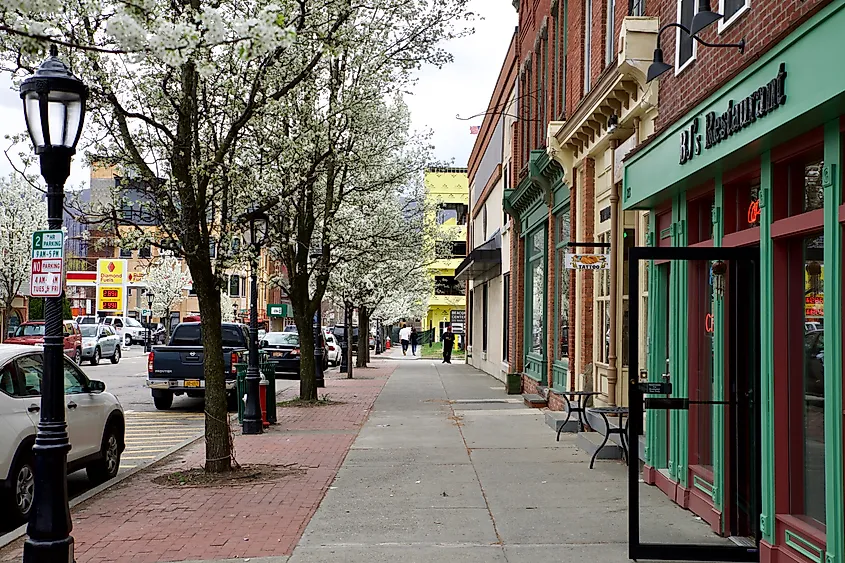
Beacon sits on the east side of the Hudson River, backed by Mount Beacon and a ridge of forested hills. Its industrial buildings, brick factories, train depots, and warehouse shells, were built to serve 19th-century manufacturing and now house galleries, restaurants, and studios. Nobody’s Fool (1994), directed by Robert Benton, was filmed in and around Beacon. The town’s unpolished edges, street grid, and weather-worn houses supported the film’s tone, which relied on working-class rhythm and understated tension. Paul Newman’s character walked along Beacon’s side streets, through parking lots, and in and out of real bars and storefronts that remain visible in the town’s layout. The production used locations without dressing them heavily, preserving the exact geometry of the town and reinforcing its realism.
Dia Beacon anchors the riverfront and fills a former Nabisco box-printing facility with large-scale installations by artists including Richard Serra, Dan Flavin, and Agnes Martin. On Main Street, Kitchen Sink Food & Drink serves local produce, grass-fed beef, and house pickles with a rotating dinner menu. The Mount Beacon Incline trail begins at the edge of town and climbs to the ruins of the upper funicular station, with panoramic views west toward the Hudson and south toward Storm King and the Highlands.
Niagara Falls

Niagara Falls, New York, sits at the edge of a geological break, where the Niagara River drops over a limestone ledge and sends water into the lower gorge. The city surrounds the falls with industrial remnants, state park infrastructure, and a small downtown near the Rainbow Bridge. Film crews have used the site for its physical spectacle and engineered surroundings. Niagara (1953), starring Marilyn Monroe, centered its plot around the falls and filmed at multiple real locations, including Prospect Point and the walkway above Horseshoe Falls. Superman II (1980) shot a rescue sequence on the American side, using the brink, railing, and observation decks to stage a public crisis. Both films emphasize the power and verticality of the falls, using them not as background but as a plot device.
Niagara Falls State Park maintains direct access to all three major viewing points. Cave of the Winds runs a wooden walkway at the base of Bridal Veil Falls, with timed entry and poncho stations. At Third Street, Power City Eatery serves Reuben sandwiches, soup, and espresso in a brick-walled space near the park entrance. The Whirlpool Rapids Trail starts north of downtown and runs alongside class 6 whitewater below the cliffs.
Piermont
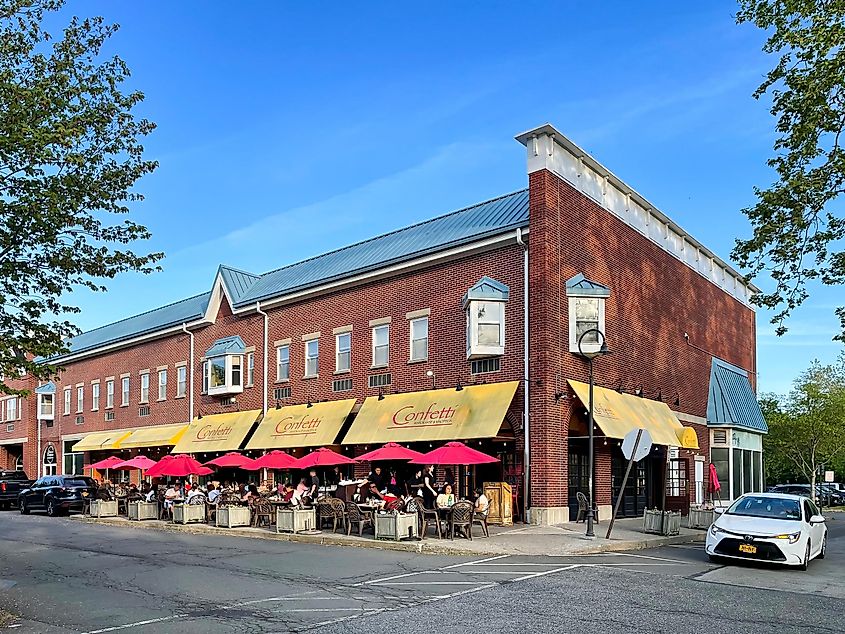
Piermont is a small Hudson River village built on marshland and a mile-long pier that once served as a military embarkation point during World War II. The town’s flat geography, tidal inlets, and intact 19th-century buildings have made it a controlled environment for film crews. The Purple Rose of Cairo (1985) filmed along Piermont Avenue, using the street’s storefronts as a Depression-era backdrop. The production altered signage but left the architecture untouched. Stepmom (1998) used the pier and surrounding streets for exterior scenes that required river light and domestic scale. Both films relied on Piermont’s fixed geometry: river on one side, Palisades rising behind, with only a narrow street in between.
The Piermont Pier extends straight into the Hudson and offers views of the Mario Cuomo Bridge and the Palisades cliffs. Bizi on Piermont Avenue serves grilled haloumi, roasted lamb, and mezze in a dining room that opens onto sidewalk seating. Tallman Mountain State Park sits just above the village and holds wooded trails, summit lookouts, and access to an elevated section of the Long Path. From the top, the village appears surrounded by water, with the pier visible as a line extending east into the channel.
These seven towns show how location shapes storytelling, visually, emotionally, and historically. Each place offers more than a filming backdrop; it holds the texture and weight of lived experience. The same trails, streets, and harbors captured on screen remain active parts of daily life. Whether marked by a lighthouse, an old pier, or the edge of a waterfall, these towns continue to anchor stories, some scripted, some unfolding without cameras.
